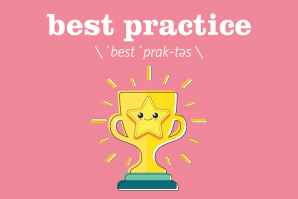Rightsizing is the Goldilocks of the business world. With the ever-changing economic landscape, organizations are always on the hunt for the perfect balance — retaining a workforce that’s not too big, not too small, but just right.
The Buzz
First used in the 1980s, the term is still not as well-known as its scarier cousin “downsizing” when it comes to discussions of altering workforce size and makeup.
Though the term may seem like a euphemism for “layoffs due to budget cuts,” rightsizing is its own process by which a company may decide to trim staff, hire new workers to fill in skill gaps or reshuffle existing duties to make the business as streamlined as possible.
“Things change very quickly in this industry,” says Melyssa Laughlin, CEO and president of Visit Vacaville. “As a destination marketing organization, we have to be constantly aware of market fluctuations. When the industry changes, so do our staffing needs.”
When Laughlin took over as CEO in 2007, it was pretty much a one-woman show. It was the beginning of the recession, and Vacaville couldn’t afford a large staff. But as market conditions improved and the budget grew, Laughlin says rightsizing is what kept her organization on an even keel.
Click here to see more of our Buzzwords series
The Word
“When your budget grows, the natural instinct is to hire people,” Laughlin says, “but that’s not always the best course of action. We need people, but we also need to find balance between what gets outsourced versus what can be an internal function.”
For many organizations, rightsizing is a way to evaluate (or reevaluate) the needs of the company and then hire, fire or reorganize accordingly. When Laughlin first came on board, Visit Vacaville had a salesperson on staff dedicated to securing event leads for conferences and other large-scale gatherings. The only problem? The city didn’t have the space to accommodate events of that size at the time, so the salesperson’s efforts were being wasted. That position was eliminated.
Fast-forward several years, and Laughlin reports that Visit Vacaville is considering hiring a salesperson again due to an increase in event space in town. It recently hired an in-house graphic designer — a “game changer” in an industry that often requires collateral at the last minute.
Now a team of five, Laughlin says Visit Vacaville is right where it needs to be — financially comfortable and operating efficiently. But, as with any business that’s trying to hit a “moving target,” it will likely have some rightsizing to do in the future.
“It’s always going to be a constant reevaluation,” Laughlin says. “It keeps us fresh.”
—
Stay up to date on business in the Capital Region: Subscribe to the Comstock’s newsletter today.
Recommended For You

Buzzwords: Solopreneur
An independent business owner who runs all aspects of the business on their own, without employees
Some choose solopreneurship because of the flexibility it provides versus the traditional corporate career path. Others become an expert in their field while working as an employee, then venture out independently to provide their services.

Buzzwords: Onboarding
The process by which a new employee is integrated into a company, from learning where the bathroom is to understanding the company culture
If you’ve ever started a new job and were told you were going to be “onboarded,” you may have had nightmarish visions of being connected up to the Borg or having your retinas scanned. (No? Just me? Maybe I watch too much science fiction.)

Buzzwords: Best Practice
A method that establishes a standard way of doing things as a means of driving higher performance, success, ideal behavior or ethics.
Professionals use the term as a guiding principle or methodology for consistency and to drive the greatest results.

Buzzwords: Open Source
At first encounter, open source sounds like something an avid yogi might achieve en route to nirvana. In reality, it’s a reaction to a particular kind of tech-induced headache.



